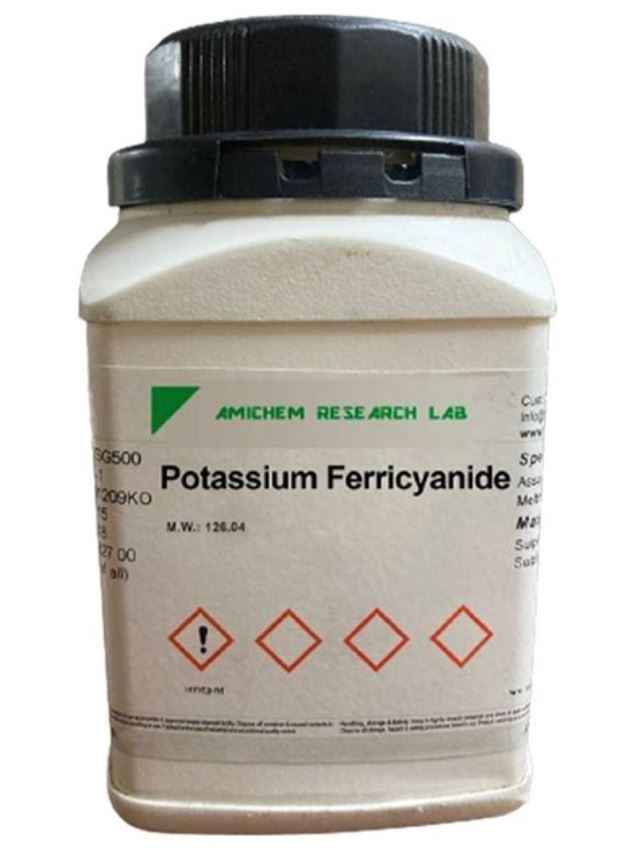Invictus Supply Co.
Potassium Ferricyanide Lab Grade 99+% Purity Cyanotype, Electroplating (50-500g)
Potassium Ferricyanide Lab Grade 99+% Purity Cyanotype, Electroplating (50-500g)
Couldn't load pickup availability
Potassium Ferricyanide has a wide range of applications across various industries and laboratories. It is commonly used as an anti-caking agent in both table salt and road salt, where it prevents clumping and ensures free flow. In the food industry, it is approved for use as a colorant in products such as sugar, baked goods, pasta, dairy, meat, fish, coffee, and chewing gum, and is also used in some medical foods and pharmaceuticals like vaccines, vitamins, and antibiotics. It is also used in the production of citric acid and wine.
In analytical chemistry, potassium ferrocyanide serves as a reagent for determining the concentration of potassium permanganate in redox titrations. It is used to detect and identify ferric ions (Fe³⁺), forming a characteristic deep blue precipitate known as Prussian blue when reacted with ferric salts. It is also employed in the detection of other metals, including copper, iron, arsenic, cadmium, lead, and zinc. The compound is used in a mixture with potassium ferricyanide and phosphate-buffered solution to buffer the enzyme beta-galactosidase, which cleaves X-Gal to produce a bright blue color for visualization in immunoassays.
Industrial applications include the purification of tin and the separation of copper from molybdenum ores. It is used in steel tempering and the engraving process. Historically, it was a key source for producing potassium cyanide before the Castner process, and it is still used in the manufacture of potassium cyanide, which is employed in gold mining. Potassium ferrocyanide can also be used as a fertilizer for plants.
In photography, potassium ferrocyanide is used in the cyanotype process for blueprinting and in toning processes, although its use as a bleaching agent has been largely replaced due to environmental and safety concerns. It is also used in the formulation of Murakami's etchant for metallography and in amperometric biosensors as an electron transfer agent, such as in some blood glucose meters. Additionally, it has been used as a catalyst in the synthesis of ammonia and cyanogen when pyrolyzed.
Share




